5 minutes to grasp the key to the explosion of generative AI from 2023 to 202 2023: from machine learning to ChatGPT
Catalog
- The Generative Artificial Intelligence Craze Triggered by ChatGPT
- Machine Learning vs. Artificial Intelligence vs. Generative Artificial Intelligence
- Generative AI Promotes the Popularization of AI Technology
- Pros
- Cons
- Top 10 Mainstream Commercial Generative AI
- ChatBot VS. ChatGPT
- 1.ChatBot - Starting with Simulating Human Conversations
- 2.ChatGPT - A Well-Trained Large Transformer
- Conclsion:the integration of generative AI into people's daily lives has contributed to the explosive growth of this technology.
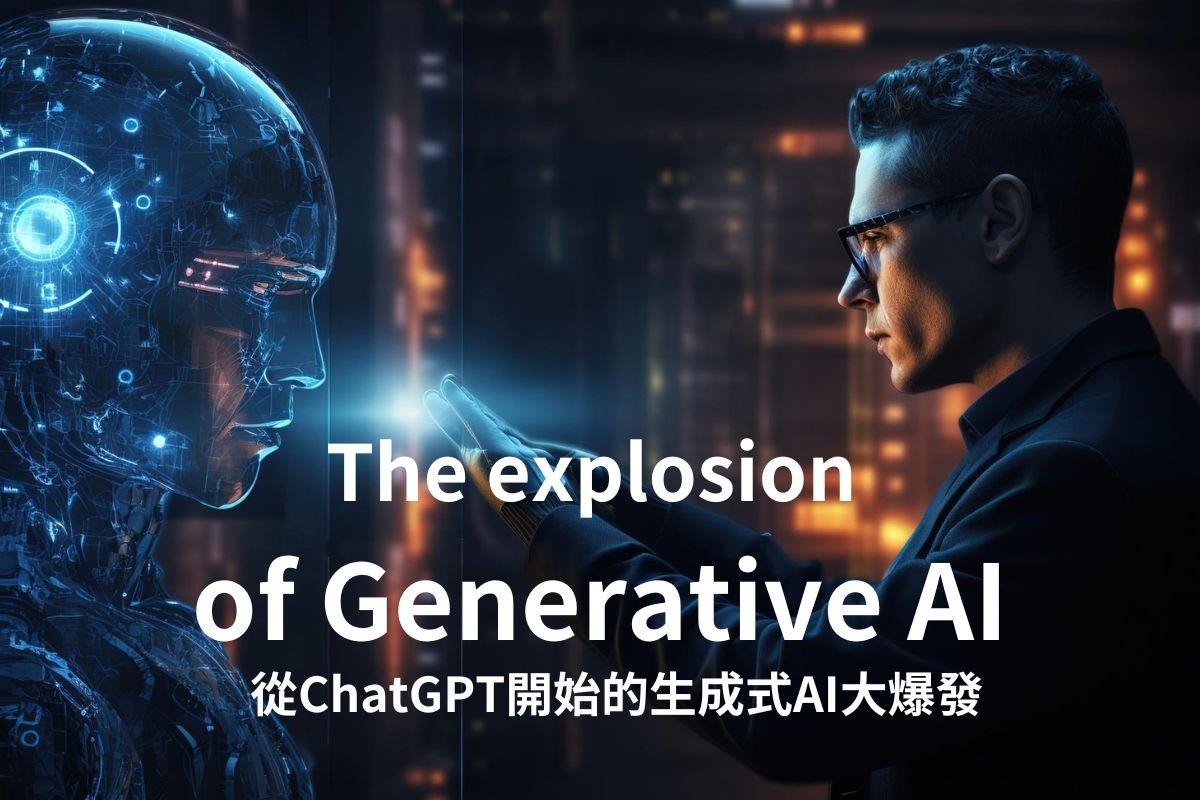
Hailed as the "super AI," ChatGPT reached 100 million users worldwide within just two months.
Source: Freepik
Mark Weiser, a pioneer in computer science, once said, "The most profound technologies are those that disappear and weave themselves into the fabric of everyday life." With the optimization of ChatGPT, the power of generative AI has truly come to the forefront this year! In comparison to many technologies that gradually integrate into everyday life and become invisible, when NVIDIA CEO Jensen Huang declares, "The era of generative AI has arrived!" The next great technology has officially arrived!
Since the launch of ChatGPT 3.5 by OpenAI in late 2022, the power of generative AI has been on the rise. In February 2023, Microsoft introduced Bing, a generative AI that can be used on mobile phones. Then, in the spring, GPT-4 was unveiled, greatly boosting the usage of ChatGPT. The potential of generative AI has fully blossomed this year. Have you, too, tried using it and been amazed by the intelligent responses and speed of the new chatbots?
Chatbots have long been a part of our daily lives. When you open a messaging app like LINE and inquire about new product information from an official brand account late at night, you may receive an automatic reply from a chatbot. But why aren't you impressed by the conversation in between? This brings us back to machine learning (ML) and generative artificial intelligence (AI).
In the following 5 minutes, we will guide you through the key points of the generative AI explosion in 2023.
The Generative Artificial Intelligence Craze Triggered by ChatGPT
Until the end of last year, it was generally believed that machine learning and artificial intelligence were only relevant to technology enthusiasts, creative professionals, large corporations, or data-driven companies. However, in just a few months of word-of-mouth accumulation, as we entered the early part of this year, an increasing number of people began using ChatGPT, causing a surge in generative AI.
Users of ChatGPT span various demographics, including students, working professionals, managers, and programmers, cutting across age, gender, and industries. The number of ChatGPT users is comparable to that of many trending products. Whether it's spontaneously asking ChatGPT to translate a short text or having it search for extensive data, ChatGPT's capabilities are vast.
Of course, regardless of the accuracy of the content generated by ChatGPT, before discussing the content it produces, we will first delve into why this is happening in this year. Why did humans suddenly dive into the whirlwind of generative AI? Beyond ChatGPT, other forms of generative artificial intelligence have also started emerging, and they are not limited to text translation and content generation. The range of applications has expanded to include images, audio, artistic design, and various forms of data.
"Now may be the luckiest time because many ideas can be realized through artificial intelligence." - Sam Altman, CEO of OpenAI

During the ChatGPT promotion period, everyone can register for free and log in for free to have a conversation with the AI chatbot.
Source: Freepik
Sam Altman, the entrepreneur who gained notoriety for co-founding OpenAI, is frequently interviewed. In a recent public speech in Taiwan, he discussed the generative AI revolution brought about by OpenAI, likening it to the launch of the first-generation iPhone, which transformed the smartphone market and even spurred the growth of apps and new service models. He believes that artificial intelligence technology will similarly lead to new market dynamics
Machine Learning vs. Artificial Intelligence vs. Generative Artificial Intelligence
In fact, generative artificial intelligence and machine learning are both AI applications. Generative artificial intelligence is a framework within machine learning, but not all machine learning frameworks are generative artificial intelligence. Before praising ChatGPT for its role as a virtual assistant, it may be worthwhile to first understand its history and relationship with AI.
Google has defined the differences among these three:
Artificial Intelligence (AI): This is the most general concept that enables machines or systems to perceive, reason, act, or adapt like humans.
Machine Learning (ML): It is an AI application that uses algorithms to analyze data, thereby extracting knowledge from data and learning automatically.
Generative AI: It refers to the use of AI (Artificial Intelligence) to create new content, such as text, images, music, audio files, and video files.

Machine learning is a subfield of artificial intelligence that makes predictions based on data through training.
Source: Freepik

Generative AI Promotes the Popularization of AI Technology
Generative AI is a form of artificial intelligence that, according to IBM's definition, refers to deep learning models capable of generating high-quality text, images, and other content based on trained data.
Deep Learning is a subset of machine learning (ML) that uses specific algorithmic structures inspired by the human brain, known as neural networks. Deep learning has driven many advancements and applications in artificial intelligence.
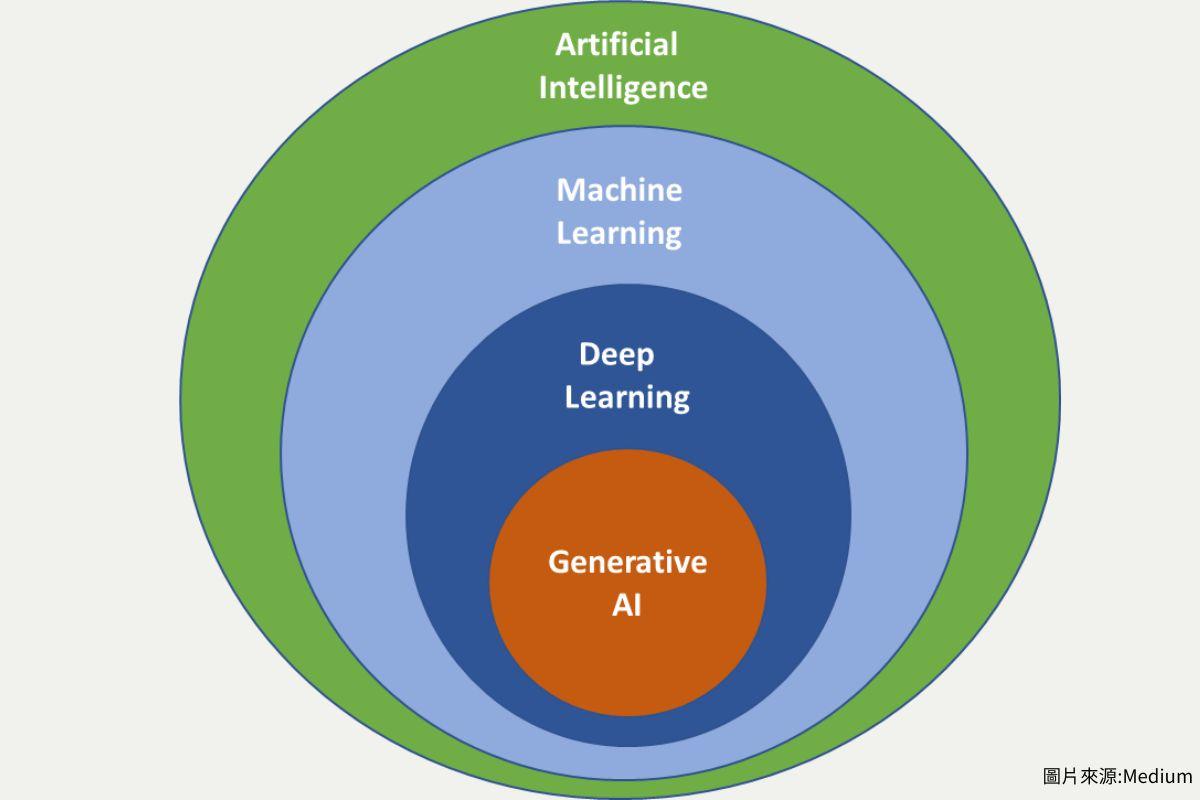
AI landscape.
Source:Medium
Pros
Cons
Generative AI relies on extensive base models that can perform various tasks, including summarization, question-answering, classification, and more, and is directly applied in many applications. It can be said that the key to generative AI lies not in the answers it provides but in whether you have asked a good question. Therefore, the role of "humans" is absolutely indispensable. Human thinking and judgment determine whether your relationship with generative AI is healthy.Even if a robot provides a substantial amount of generated content, without proper validation, much of the data can only be considered as a reference and may not become the final version of the task. Moreover, the process by which generative AI arrives at its answers is often seen as a "black box," and the answers themselves can be biased and distorted.
Reflecting on the progress of AI through the lens of Generative AI, we can understand that AI is continually advancing rapidly. Generative artificial intelligence represents a significant milestone in the field of artificial intelligence. Looking back at the history of AI development, the rise of generative AI signifies that AI is moving towards broader and more complex real-world applications. However, the advantages and disadvantages of its application are issues that cannot be ignored.Currently, there is still a gap in achieving full automation and complete accuracy in AI. Generative AI has opened up exciting possibilities, but there are challenges to overcome.
The focus of generative AI is not so much on providing answers but rather on whether you have asked a good question.
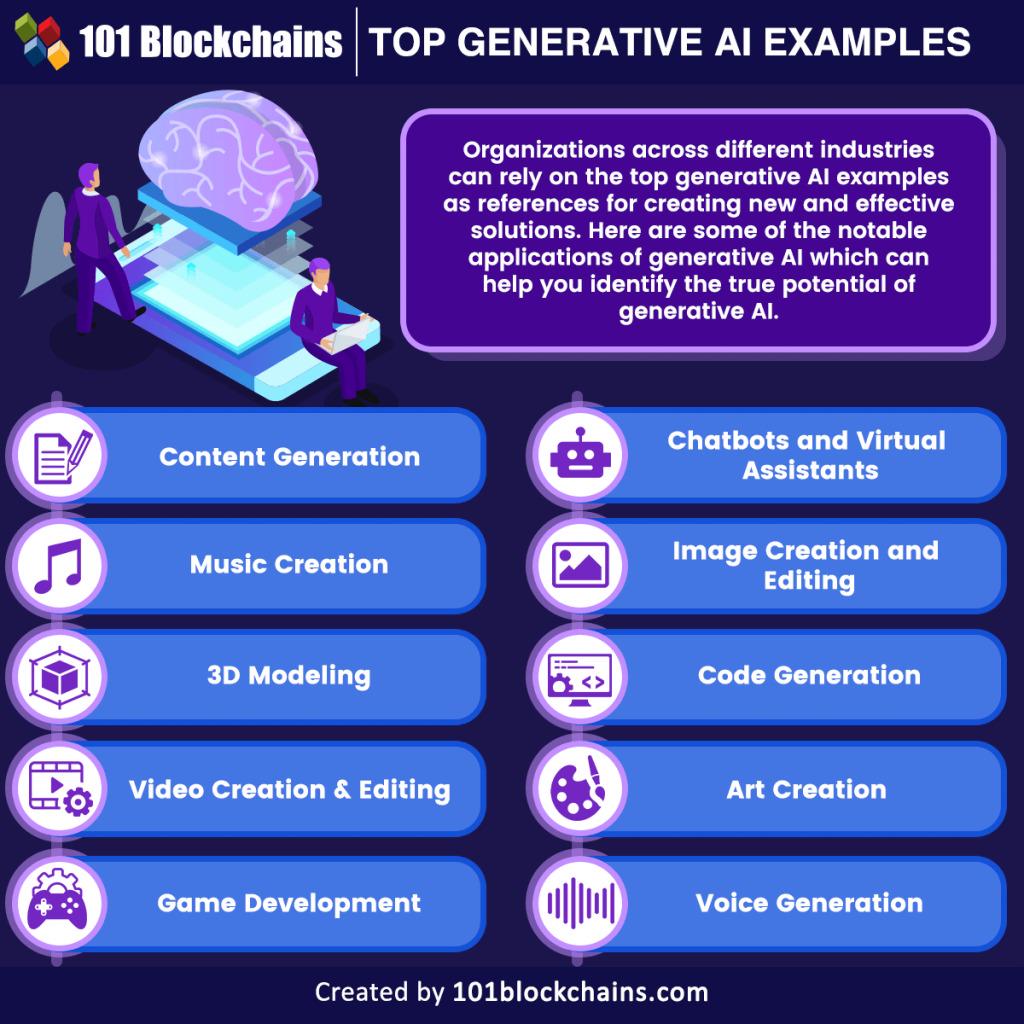
Generative AI technology has made significant breakthroughs in areas such as automatic summarization, virtual assistants, creative art generation, and more.
Source:101blockchains
Top 10 Mainstream Commercial Generative AI
Here is a brief introduction to the top 10 popular generative AI tools according to Technology magazine's ranking. These top generative AI tools empower businesses and professionals. However, it's important to note that some of these tools may have regional restrictions limited to Europe or the Americas. Additionally, many of these tools are primarily offered by the three major enterprises: OpenAI, Google, and Microsoft. It can be said that 2023 is also a battleground for generative AI products.
1.ChatGPT (OpenAI): Known for its conversational generative content, ChatGPT has become the fastest-growing consumer software application in history, with over 100 million users as of January 2023.
2.Bard (Google): Developed by Google as a generative AI chatbot, Bard was created as a competitor to OpenAI's ChatGPT and expanded to more countries by May 2023.
3.Claude 2 (Anthropic): Developed by Anthropic, Claude 2 is considered one of ChatGPT's main competitors. It can assist with content summarization, document handling, and answering questions. Claude 2's data has been updated to early 2023.
4.GitHub Copilot (OpenAI & Microsoft): Powered by OpenAI's technology, Copilot is an automatic code completion service launched by GitHub in the past year, assisting developers with code writing using AI.
5.Bing AI (Microsoft): Microsoft's Bing AI allows users to chat, search, and find inspiration. It includes features such as providing summary answers, drafting content, and viewing images.
6.Sensei GenAI (Adobe): Developed by Adobe's Sensei GenAI, it can directly integrate new creative generative AI models like Firefly Adobe Sensei. It supports content personalization, editing, marketing copy generation, and interactive experiences.
7.DALL-E 2 (OpenAI): Also from OpenAI, DALL-E 2 is an AI drawing software developed from the GPT-3 model. It can create realistic photos or artwork based on natural language descriptions.
8.AlphaCode (Google DeepMind): AlphaCode from Google DeepMind can autonomously write code.
9.Autodesk Generative Design: Used across various industries from automotive to architecture, Autodesk's Generative Design allows users to quickly generate optimized high-performance design alternatives.
10.Synthesia: It supports text-to-3D technology development and can generate a large number of realistic images.
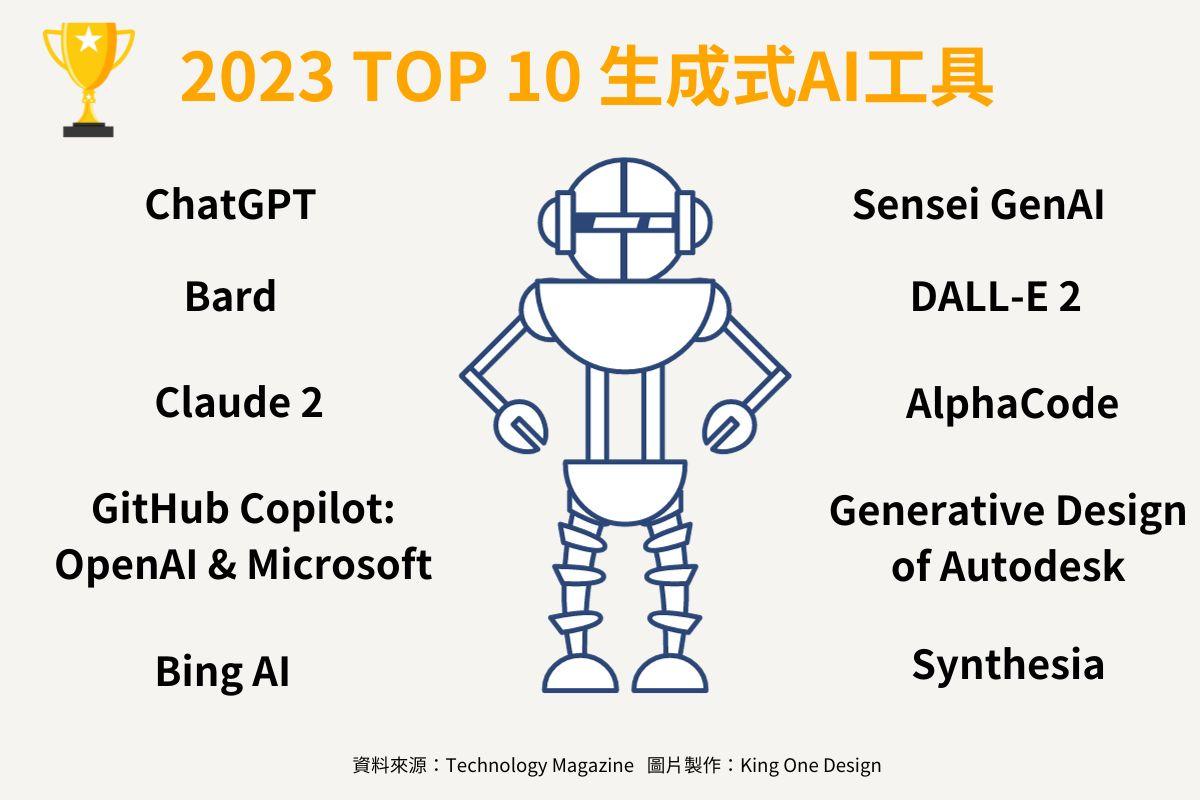
The Economist: In the past, AI relied on human labeling, but now with these large generative AI models, you can simply input and get results. They are excellent at matching models and can handle complex instructions. However, a lack of transparency is one of their drawbacks.
Despite the remarkable capabilities of generative AI in self-learning and data processing, it still requires human guidance, training, and supervision to ensure its effectiveness and ethical application. Humans play a crucial guiding role in the optimization process of generative AI.

Source: Freepik
ChatBot VS. ChatGPT
In 1950, Alan Turing, the father of computer science, posed the question "Can Machines Think?" Fast forward 73 years, and we now have chatbots capable of simulating human brains, engaging in conversational generative content, and more. However, chatbots operate in various ways, depending on the complexity of their software.
Next, let's delve deeper into the current champion of this wave of generative AI battle - ChatGPT. It is a type of chatbot, essentially an evolved version.
1.ChatBot - Starting with Simulating Human Conversations
A standard chatbot is a computer program designed to engage in conversations or text-based interactions with users. Early classic chatbots include "ELIZA" from 1966 and "PARRY" from 1972. In recent years, examples include Apple's "Siri" and Amazon's "Alexa." Chatbots are capable of simulating human conversations and serve practical purposes such as customer service and information retrieval. Common applications of chatbots in the market include CRM personalization, real-time customer support, shopping assistance, and payment processing, among others. In recent years, chatbots have expanded their applications into various fields, including healthcare, finance, education, and many others.
Some chatbots are equipped with natural language processing systems, while simpler systems extract keywords from user inputs and find the most appropriate response from a database. Currently, chatbots are often considered virtual assistants.
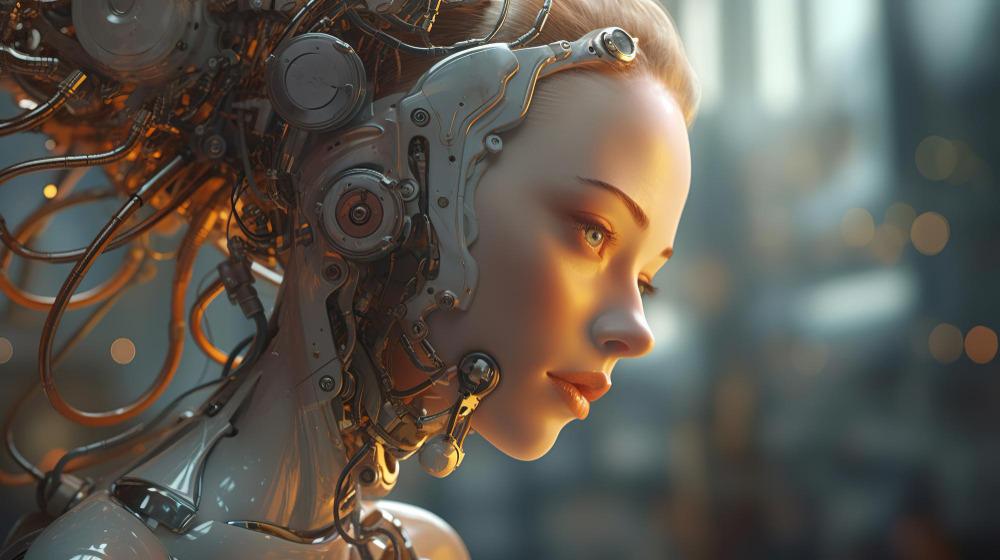
The emergence of chatbots can be traced back to as early as 1966 when MIT's laboratory introduced ELIZA.
Source: Freepik
2.ChatGPT - A Well-Trained Large Transformer
ChatGPT, short for "Chat Generative Pre-trained Transformer," differs from standard chatbots that rely on pre-programmed responses. It leverages extensive training to provide contextually meaningful and logically sound responses. It can understand language elegantly, grasp the intent behind user queries, and provide relevant replies.
"ChatGPT can complement human expertise by providing real-time access to knowledge, recommending solutions, and automating repetitive tasks." Since the data training for ChatGPT3.5 concluded before September 2021, data collection is based on information available up to that point. However, there are now plugins that can overcome this limitation. Nonetheless, in comparisons between GPT-4 and ChatGPT3.5, it is generally believed that GPT-4 is more reliable, creative, and capable of handling more nuanced instructions, especially for complex tasks.
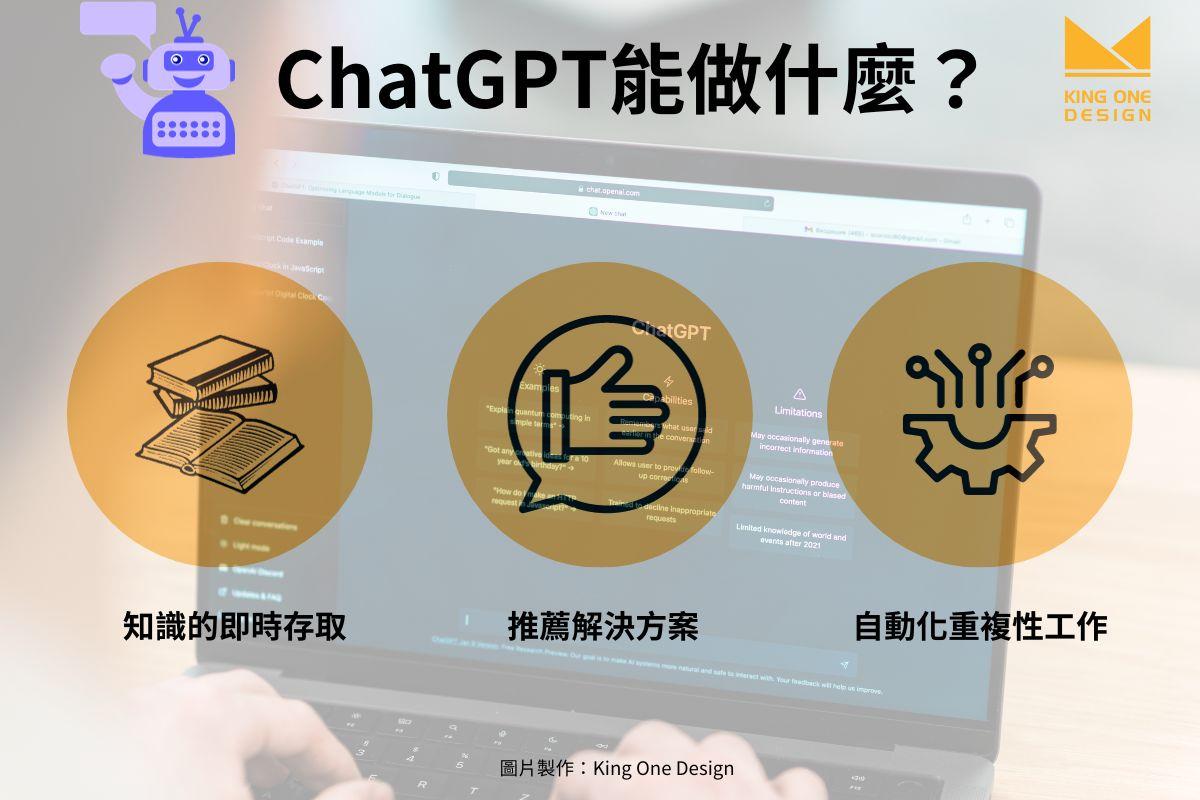
By adjusting the prompts, humans can optimize ChatGPT's generated content, leading to more efficient human-machine collaboration.
Conclsion:the integration of generative AI into people's daily lives has contributed to the explosive growth of this technology.
Will AI replace human jobs? Let's first see how much time it can save us! The explosive growth of generative AI is closely linked to its collaboration with humans. According to Salesforce's survey, 52% of people say they now use generative AI more frequently than when they first started. "Using generative AI, on average, saves 5 hours per week (52 weeks in a year) / 8 hours per workday = an average of 32.5 days or more than a month saved each year."
Indeed, as Steve Jobs devoted his life to the idea that "technology should change the lives of people" and Mark Weiser's belief that "the greatest technology is the one that has integrated into everyday life and gradually disappeared."
Great technology should be widely applied in people's lives. As generative AI matures on the software side, it becomes a "virtual assistant" that anyone can use, greatly changing our lifestyle and creative applications. When major companies like OpenAI, Google, Microsoft, and others are competing fiercely in the development and optimization of generative AI, you and I as users are beneficiaries. Most programmers believe that "using GPT is an efficiency issue. Of course, it has its flaws, but it excels in handling conversations, which is why it has been so successful this year. Otherwise, we would just use a regular ChatBot." Instead of worrying about AI replacing your job, it's better to think about how to make good use of technology assistance and collaborate effectively with virtual assistants in "smart automation" roles.
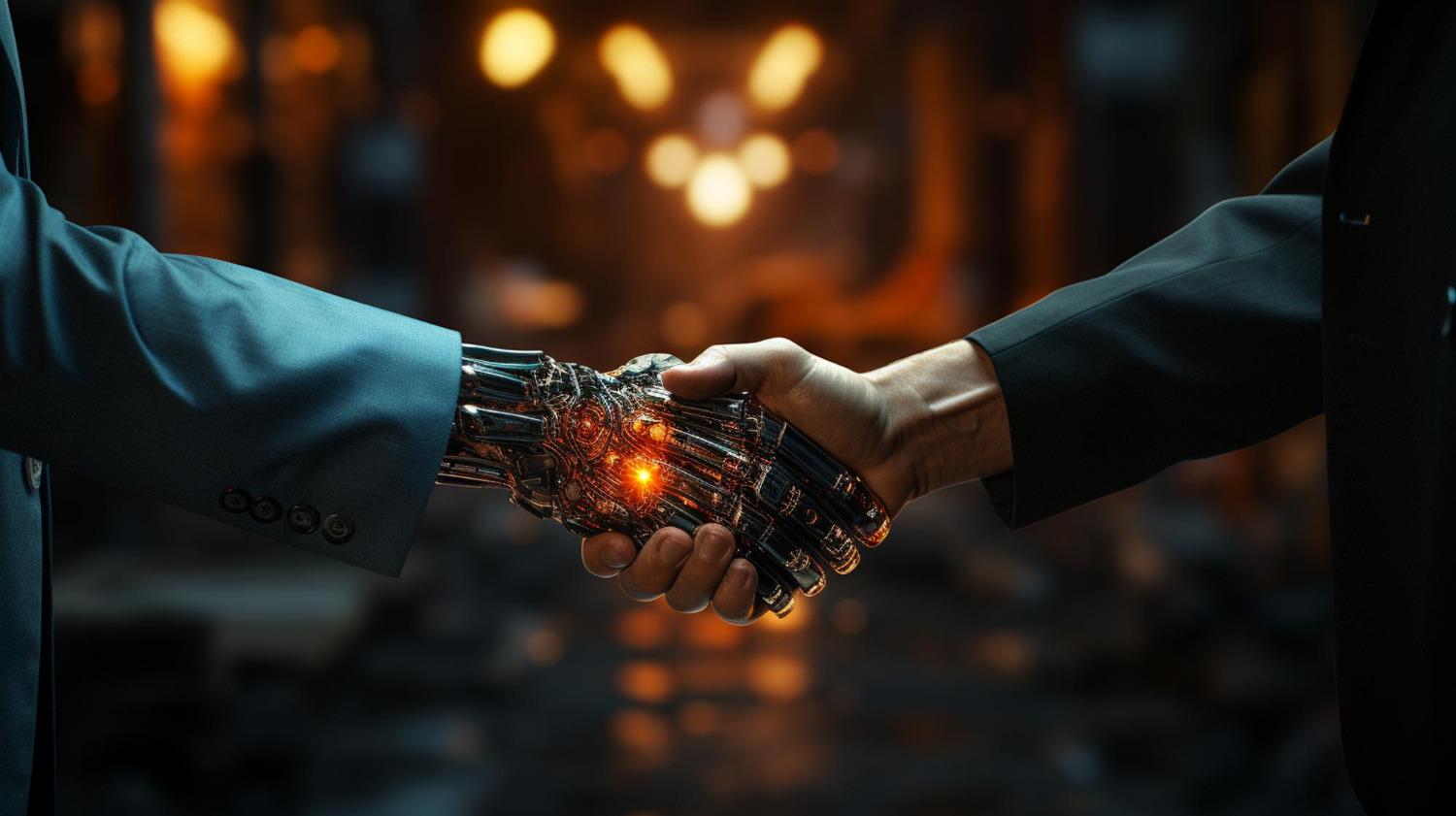
Humans play a crucial role in the training and optimization process of generative AI.
Source: Freepik
- 1
6 Different Types of Trade Show Booths You Need to Know
Brand Strategy
- 2
[Travel around the world] Hannover, Germany
Industry Trends
- 3
What is CIS? Corporate Identity Design that goes hand in hand with exhibition design
Tech Life & Trends
- 4
Five creative ways to enhance your booth appeal
Tech Life & Trends
- 5
SAVE THIS PAGE! Useful Vocabulary and Sentences for Exhibition Goers and Exhibitors!
Exclusive Perspective
- 6
What is the definition of Experiential Marketing? From 5 perspectives, you will get it!
Tech Life & Trends













Generative AI, based on deep learning models, has revolutionized the way humans interact with machines, enabling machines to understand and generate human language and content more naturally. Generative AI represents a direction in artificial intelligence that is increasingly aligned with human needs and creativity. Due to its flexibility and versatility, generative AI has shown immense creative potential in fields such as text generation, language translation, image generation, music composition, and more. As a result, collaboration between humans and machines has become more efficient. NVIDIA CEO Jensen Huang has boldly stated that generative AI holds significant value in driving innovation in industries and fueling a new wave of high-performance computing demand. Lisa Su, CEO of AMD, also mentioned, "AI will be everywhere in the next five years."